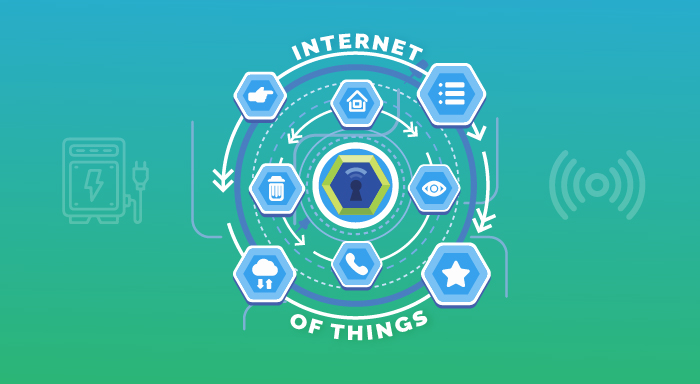IoT (Internet of Things) refers to automated physical items that are implanted with software, sensors, and other linked elements that operate intelligently and wirelessly. IoT devices are designed to share, gather, and exchange data via the Internet in addition to carrying out distant tasks. Devices connected to the Functional blocks of IoT collect data from their surroundings, send it to other devices or cloud platforms, and carry out actions by setting off a trigger. The best examples of Internet of Things devices are voice controllers, smart security systems, dishwashers, fingerprint timeclocks, August doorbell cameras, echo plus voice controllers, and so on.
What are the Functional Blocks of IoT devices?
The functional blocks of IoT devices refers to the functioning system or component or modules of the Internet of Things. These functional blocks allow IoT devices to work together, gather data, process it, and perform actions or communicate with other devices.
Only with the functional blocks, are IoT devices able to function those specific actions for which they have been designed. Within the functional Internet of Things, devices function intendedly.
Let’s Understand the Functional Blocks of IoT Devices Along with Their Functionalities
Depending on the device’s purpose and complexity the functional blocks can vary but the top collections are the Sensor for data collection, the processor & controller for processing.
Additionally, the other functional blocks are actuators for actions, data processing for analytics, connectivity modules for communication, power supply, memory, user interface, and security measures. To have a deep understanding of all the mentioned blocks, let’s jump a little down.
- Sensor/Actuator:
Sensors are those that collect data from the surrounding environment of the devices such as temperature, humidity, motion, light, and other relevant things.
Depending on the thing that needs to be captured from surroundings there are different types of sensors like temperature sensors, humidity sensors, motion sensors, light sensors, and other categories. The data collected by these sensors are known as fundamental input for IoT devices.
Apart from this, sensors are also called Actuators. When IoT devices take action for what they are intended or designed IoT Actuators are required. It helps in giving responses to collected data or receiving commands from remote systems. There are many varieties of actuators of IoT devices available such as motors, relays, or servos, which are responsible for carrying out the mentioned actions.
Also Read
IoT Data Visualization | Understand the Power of Connected IoT Devices
History of IoT: Analyzing the Origins of IoT
- Processor or Controller:
Processors or controllers are also known as the brains of IoT devices since these types of controllers make decisions and control the whole operation of the devices. The range of the controller or processor of the IoT devices varies from simple microcontrollers to highly powerful processors depending on the complexity of the device.
- Connectivity Module:
The connectivity Module enables IoT devices to communicate with other devices or systems over the internet and perform their action by providing wireless or wired communication ability. Hence the connectivity module does include Wi-Fi connection, Bluetooth, cellular, LoRa, Zigbee, and other communication protocols in iot.
- Power Supply:
Every IoT device needs a source of supply for its functioning that is known as a “Power supply” or one of the functioning blocks of the IoT device. There can be different varieties of power supply such as batteries, power adapters, energy harvesting modules, and another power source that keep IoT devices operational.
- Memory and Storage:
This functional block of IoT devices is used to store data such as firmware and other essential information. IoT or the Internet of Things mostly have limited memory or storage space so you need to optimize them concisely and carefully.
- User Interface:
As IoT devices are smart, wireless, and automated so some of them have user interfaces such as display, interactive buttons, touchscreens, and so on for user interaction. The user interface allows the user to configure settings and receive information from the device.
- Security:
Another functioning block of IoT devices is security which allows devices to protect data and make devices resistant to unauthorized access or tempering. So, the categories of IoT device Security include encryption, authentication, secure boot processes, and so on.
- Data Processing and Analytics:
If you are using or thinking of using an advanced IoT device only then a Data Processing and Analytics functioning block will required. This is because Data Processing and Analytics blocks include the analysis process of collected data, extracting insight, and sending relevant information to other devices or on cloud platforms.
Final Words:
Functioning blocks of IoT devices are the components through which IoT devices implement their functions or perform the action for which they are designed. The functioning blocks of Internet of Things devices vary based on their complexity and intention. But some of the common usable functioning blocks of IoT devices are Sensors, Processors, Connectivity Modules, Power supply, Memory and storage, User Interface, Security, Actuators, & data Processing & analytics. Hence, to have in-depth knowledge let’s jump into the article.
Faqs For Functional Blocks of IoT
Q. What is IoT?
A- IoT is a network of devices, commonly referred to as “things” that are related with each other and can exchange data. Usually, these devices are embedded with sensors, software, and other technologies with the purpose of sharing information For example, devices such as busy lights communicate a person's work status with an LED light from a connection with the software on their computer.
Q. What is the functional model of IoT?
A-In the functional model, we deal with functional groups (FGs) like devices, applications, security, etc. that comprise IoT. The functional model describes these FGs and their communication with one another.
Q. What are the functional layers of IoT?
A- IoT architecture requires functional layers to ensure smooth collection, analysis, and utilization of data. Namely, the functional layers are: the data processing layer, device layer, application layer, and network layer.
Q. How does IoT work?
A- IoT connects various devices over a network that can be Bluetooth, Wi-Fi, or cellular network. These devices can then be connected with one another to collect, send, exchange, or analyze data.
Q. What are the functional blocks of an IoT ecosystem?
A- The functional blocks that make up the IoT ecosystem are sensors, processors, applications, gateways, and databases. These blocks then make an IoT network capable of sensing, identification, automation, actuation, communication, and management.
Q. What is the number of IoT functional blocks?
A- Namely, there are five functional blocks in an IoT ecosystem
Related Posts
IoT Levels Explained: A Deep Dive into the Internet of Things Hierarchy
Learn the Ideas Behind the Logical and Physical Designs of IOT
Internet of Things | IoT Design Methodology And Its Importance



